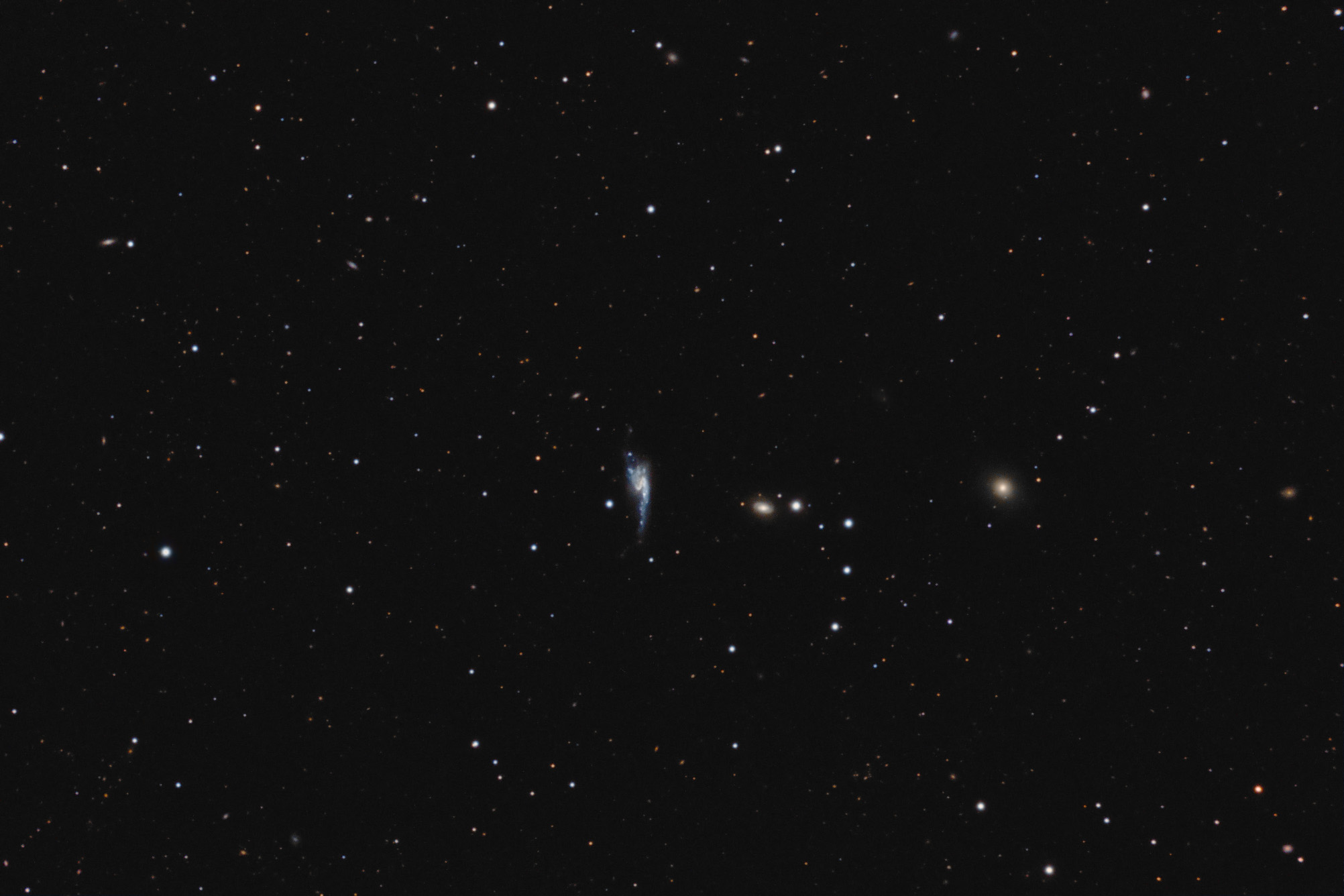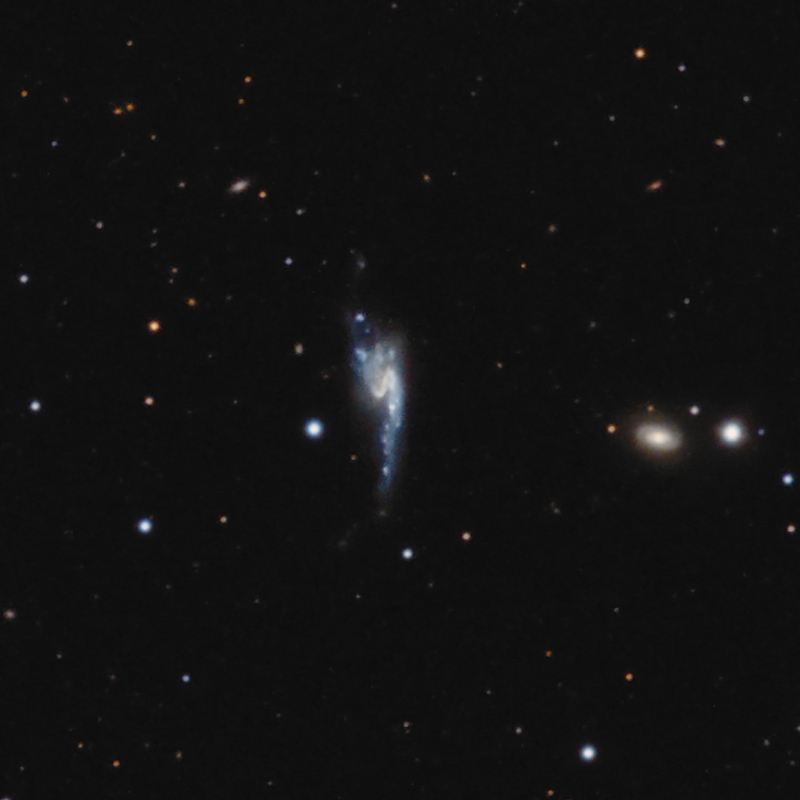| Description | Images |
Object name: NGC4004Designation(s): NGC4004, NGC4004B, NGC3988, NGC 4004 is one of the strangest galaxies I've imaged that didn't make it into Arp's Atlas of Peculiar Galaxies though it certainly appears more peculiar than dozens that are in the Atlas. It is located in the far northwest corner of Leo, right beside Coma Berenices and Ursa Major boundaries. Redshift puts it about 170 million light-years distant. It is likely a member of the ZwCl 1154.9+2806 galaxy cluster which is some 70 minutes of arc in diameter with 209 members according to NED. It is also known as the UGCl 243 galaxy cluster. It is also part of the NGC 4008 galaxy group of 14 galaxies. NED shows the group's distance at 170 million light-years but the distance to NGC 4008 itself (out of my image to the north) as 180 million light-years. No size is listed for the group. Related Designation(s):2MASS J11572422+2752388, 2MASS J11575137+2752072, 2MASS J11580522+2752435, 2MASX J11572422+2752386, 2MASX J11575134+2752072, 2MASX J11580522+2752441, 2MASXi J1157242+275238, 2MASXi J1157513+275207, 2MASXi J1158051+275243, AKARI J1158048+275239, ASK 573882.0, ASK 573884.0, ASK 573886.0, CGCG 1154.8+2809, CGCG 1155.2+2808, CGCG 1155.4+2809, CGCG 157-061, CGCG 157-063, CGCG 157-065, ECO 03202, ECO 03210, ECO 03216, GALEXASC J115724.31+275239.0 , GALEXASC J115751.34+275208.3 , GALEXMSC J115724.35+275240.0 , GALEXMSC J115751.42+275208.1 , HDCE 0686 NED001, HDCE 0686 NED002, HOLM 312A, HOLM 312B, IC 2982, IRAS 11555+2809, IRAS F11555+2809, KUG 1155+281, LDCE 0855 NED001, LDCE 0855 NED002, LGG 262:[G93] 001, MAPS-NGP O_320_0485368, MAPS-NGP O_320_0485764, MCG +05-28-057, MCG +05-28-059, MCG +05-28-060, MRK 0432, NGC 3988, NGC 4004, NGC 4004B, NGC3988, NGC4004, NGC4004B, NPM1G +28.0211, NSA 102400, NSA 102403, NSA 160817, NVSS J115805+275241, PGC 037609, PGC 037636, PGC 037654, SDSS J115724.22+275239.0, SDSS J115724.22+275239.1, SDSS J115751.37+275207.2, SDSS J115751.38+275207.2, SDSS J115805.22+275243.8, SDSS J115805.22+275243.9, SDSS J115805.22+275244.0, SDSS J115805.23+275243.9, SSTSL2 J115751.37+275206.8, UGC 06950, USGC U435 NED04, USGC U435 NED05, UZC J115724.2+275239, UZC J115751.4+275207, UZC J115805.2+275243, VV 230, WBL 367-001, WBL 367-002, WBL 367-003, [KG2002] J115724.21+275239.2 , [KG2002] J115751.40+275207.0 , [KG2002] J115805.20+275243.0 , [M98j] 151 NED01, [PJY2015] 587741602566766624 , [TTL2012] 331242, [TTL2012] 331244, [TTL2012] 331246, | Permanent link: https://images.mantrapskies.com/catalog/NGC/NGC4004-NGC4004B-NGC3988/NGC4004L4X10RGB2X10R.JPG |


